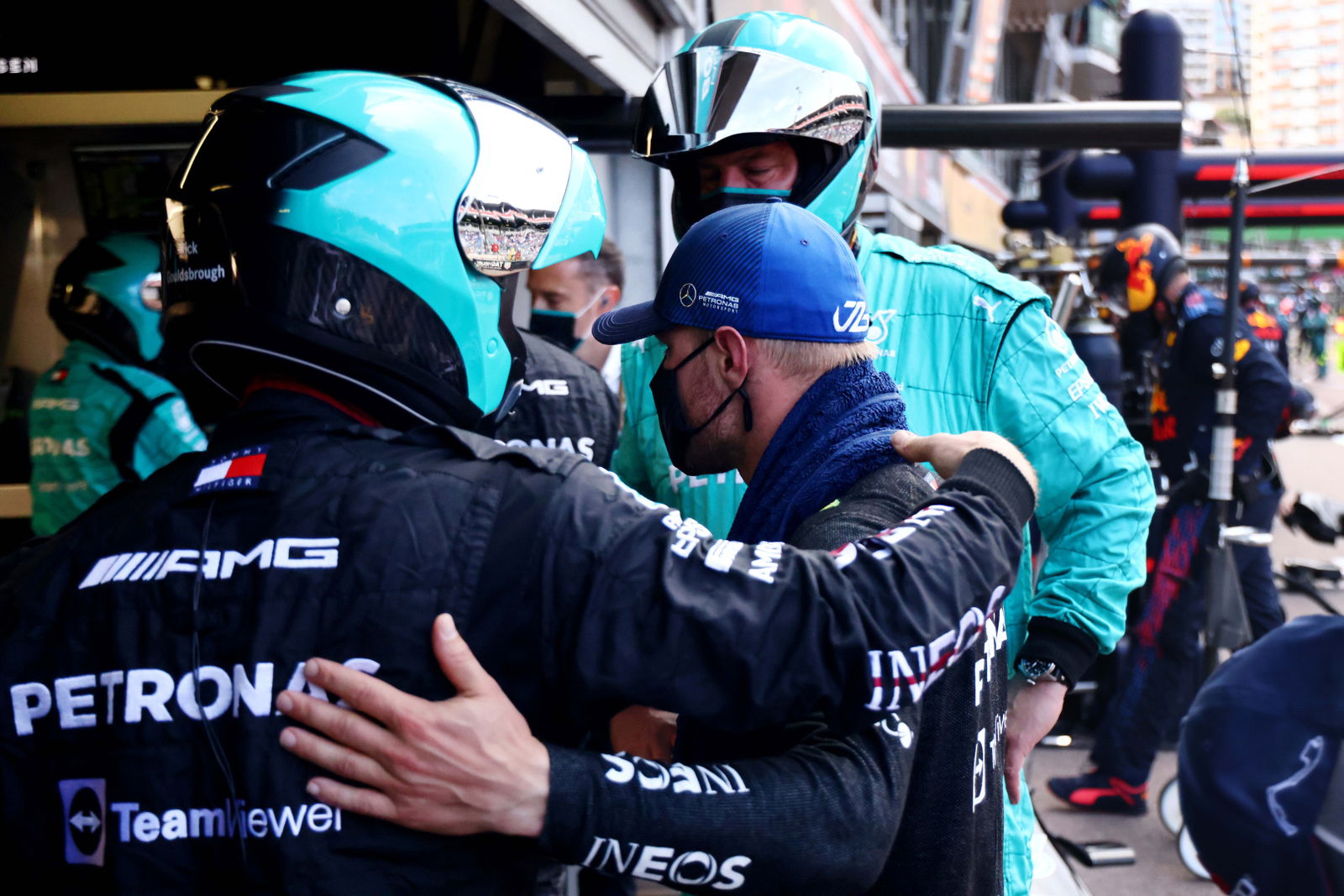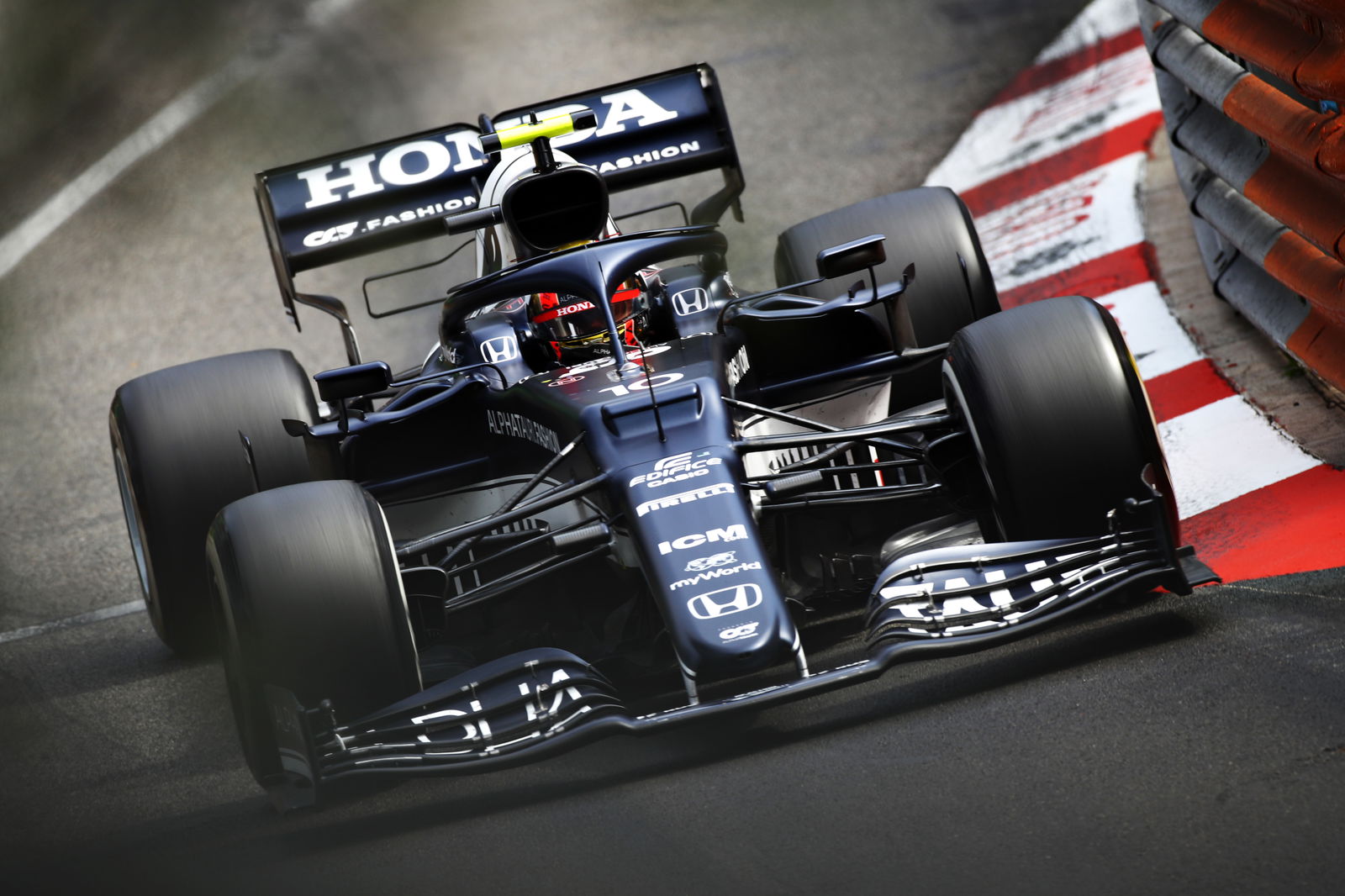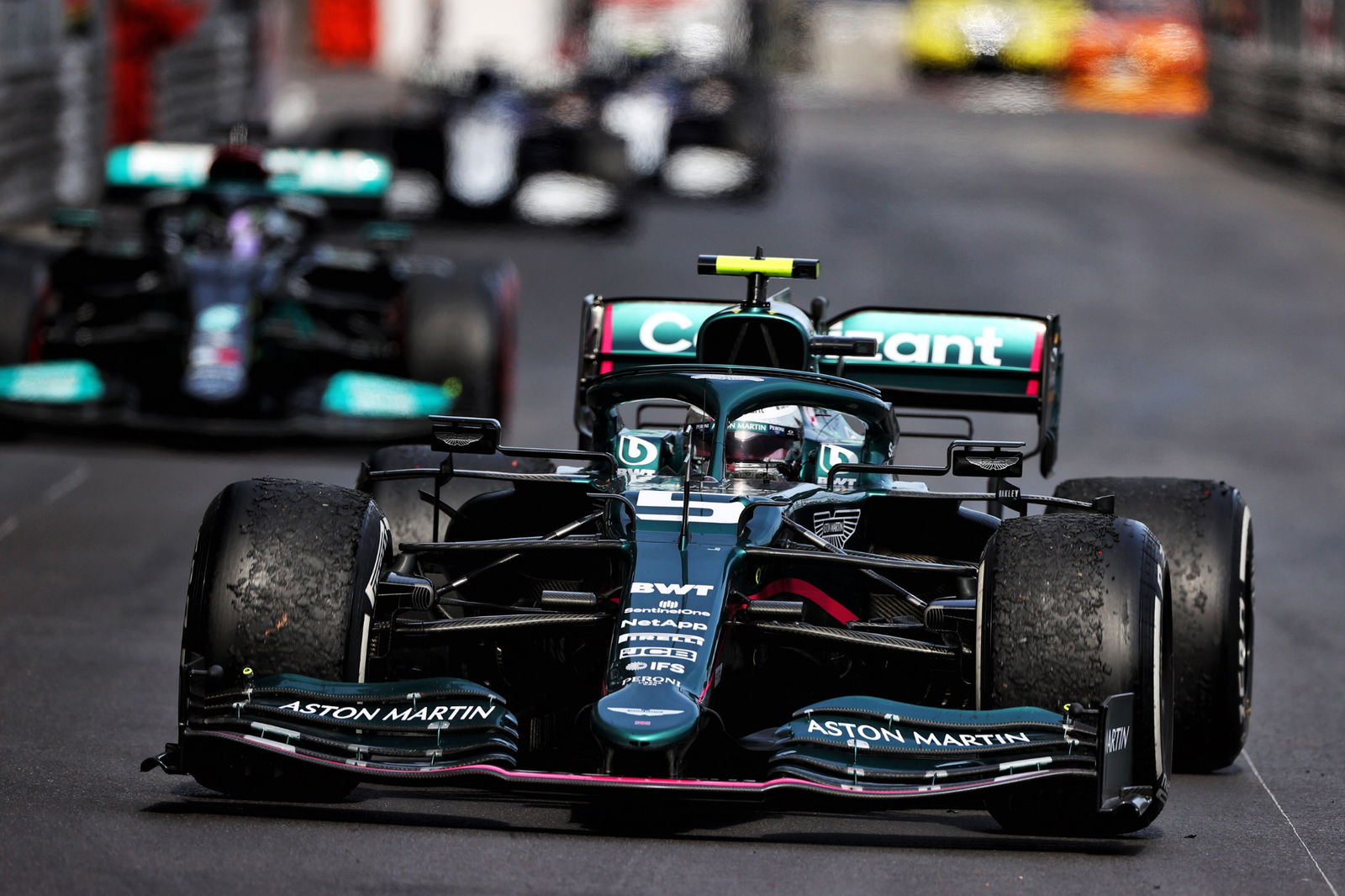F1 Monaco Grand Prix: How did it go so badly wrong for Mercedes?

The 2021 Monaco Grand Prix certainly fell under the latter category, having revived memories of similar - albeit rare - collapses in recent times such as Germany 2019 and Sakhir 2020.
Mercedes was correct in its estimation that Red Bull would be the team to beat in Monaco, but the team’s overall lack of competitiveness across the weekend was worse than expected.
While Verstappen sealed a dominant second victory of the season to move into the world championship lead for the first time, Mercedes endured a disastrous afternoon in the principality.
Lewis Hamilton struggled to seventh and a calamitous pit stop forced Valtteri Bottas into retirement, leading Mercedes technical director James Allison to concede the team felt “lower than a snake’s belly” after a monumental “screw up”.
A number of key factors ultimately contributed to Mercedes suffering one of its worst weekends of the hybrid era…
A lack of pace in the car
The biggest issue for Mercedes was simply that it wasn’t fast enough.
After Thursday practice, Mercedes never looked in contention to challenge for victory. It faced tyre woes (something this writer covered in more detail in a separate piece) that fundamentally came down to struggling to get its tyres into the operating window. This was exacerbated by cooler temperatures on Saturday and taking the wrong set-up direction on Hamilton’s car.
That translated into a below-par qualifying. Bottas fared slightly better on his way to third, while Hamilton, lacking confidence and grip in the car, could only manage seventh, marking his worst qualifying position since Germany 2018.
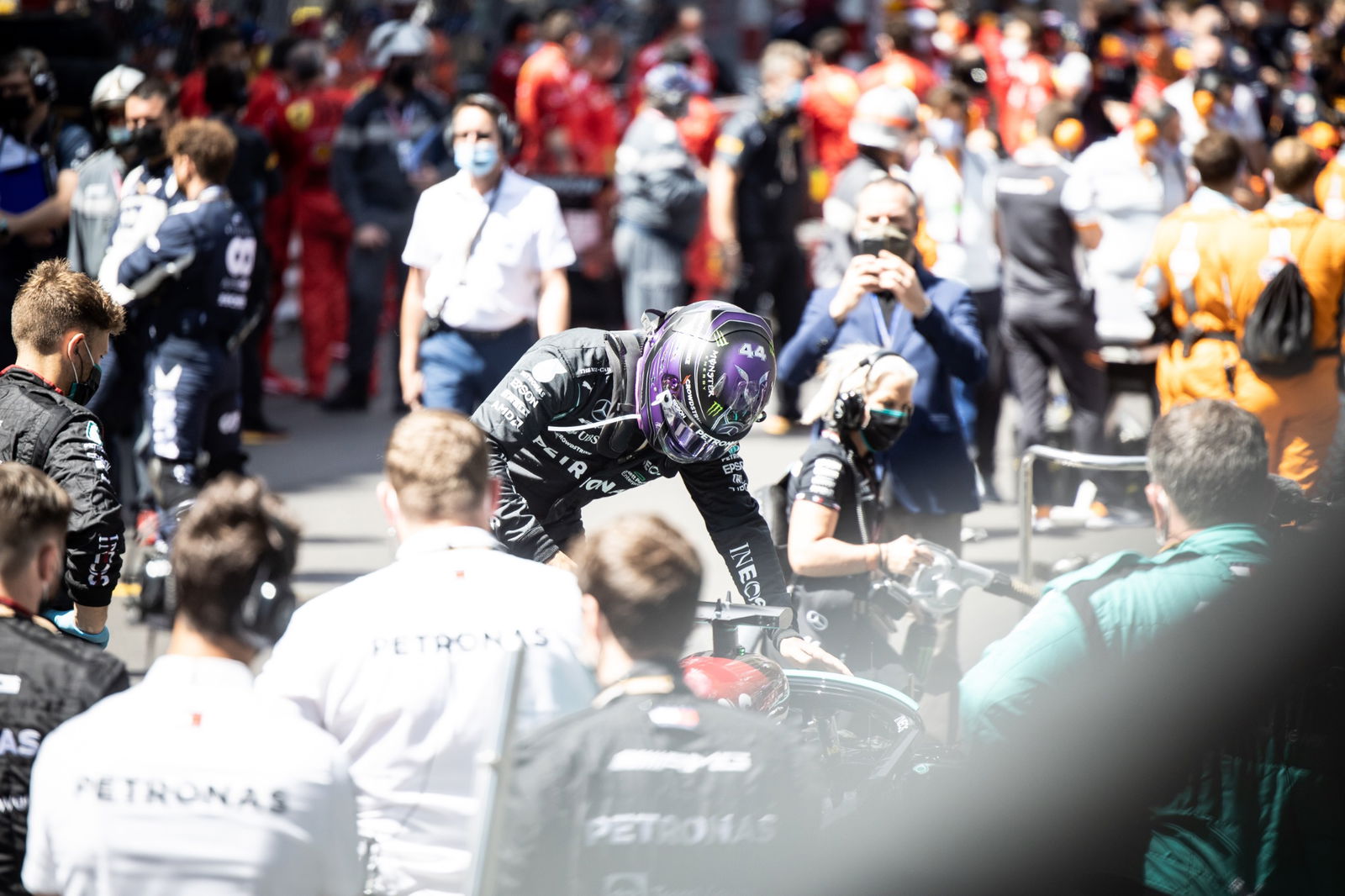
With qualifying king around Monaco’s tight and twisty streets, that effectively meant Mercedes' drivers were in for a tough Sunday - and a difficult race is exactly what transpired.
Aside from its victory in 2019, Monaco is a circuit that Mercedes has traditionally struggled at in recent years. This is largely due to the design philosophy of its car which ultimately makes it so devastatingly quick at the majority of tracks on the calendar.
“Monaco has never been a happy place for us,” said Mercedes boss Toto Wolff. “We had outliers - 2019 in terms of pace, but it is similar to events we had in Singapore in the past.
“It’s somehow ingrained in our DNA where our car goes well or not and the answers are not always easy to find. There seems to be an inherent DNA in the car. But we know where we need to optimise the car and how we need to get the tyres in a better window.
"You are building a car for 23 races and there will be outliers in both directions where you will underperform. And Monaco is definitely an outlier where you need a totally different car than let’s say the average tracks.”
The wrong strategy for Hamilton
Mercedes had initially planned to run Hamilton longer than the cars in front in a bid to make up ground in the race, with strategy the most effective way to gain positions in Monaco.
But when those in front did not stop as early as Mercedes had anticipated, their plans quickly changed from an overcut to an undercut strategy. This was something Hamilton had initially asked his team to try, although it was not broadcast at the time.
This proved to be the wrong call, and when Hamilton was unable to extract the required performance from his cold Hard tyres during his crucial outlap, his rivals responded to cover it off.

First, Gasly unexpectedly emerged out of the pits ahead of Hamilton. Being stuck on the gearbox of the AlphaTauri hampered the seven-time world champion, who went on to lose out to Aston Martin’s Sebastian Vettel and Red Bull’s Sergio Perez.
Despite Charles Leclerc failing to start the race from pole and Bottas’ race-ending pit stop issue, Hamilton found himself back where he was due to start in P7. Understandably, he was incandescent.
“I can understand why Lewis isn’t happy because effectively we lost a chunk of places with the strategy call we made,” said Mercedes technical director James Allison.
“It’s always a finely-balanced call [between undercut and overcut] and today we picked the wrong one of those two options.
"Lewis still had some rubber left on the tyre for what would have been a few decent laps but the chances are that Gasly probably wouldn’t have stopped any time soon, and our fear was that Gasly was simply going to stay out there as a road-blocker forever.
“We had a window behind where we could do an attempted undercut and unfortunately we weren’t able to get enough lap time in our outlap to get past Gasly on the track when he subsequently made his stop to protect against it.
“Then Gasly’s pace after the stop was so, so slow, that that in turn effectively allowed Vettel and Perez to leapfrog the pair of us.
“We didn’t have good options either way, because it was in Gasly’s gift for when he stopped if we wanted to do the overcut, and we felt that would have been a long way distant.
“We had to make the undercut stick in order to stop the world falling on our heads and sadly, by choosing the undercut and not making it work, the world did fall on our heads with the subsequent loss of places to Vettel and to Perez.”

A ‘catastrophic’ pit stop failure
At the front, Bottas had been hoping to take the fight to Verstappen after being promoted to second due to Leclerc’s DNS, but any chance of a first victory of the season ended in the pits.
The Finn came in at the end of lap 30 but an issue meant the team was unable to get his front-right tyre off the car. Mercedes ultimately had no option but to retire the car, leaving Bottas ruing a “big mistake” from his team.
But did it come down to human error, or equipment failure?
Wolff refused to pin the blame solely on the wheel gun man and argued “there’s always many factors that contribute to such a catastrophic failure.”
“In that case we need to review the design, we need to review the material of our wheel nut because the mechanics that operate the wheel nut need to do it in a way that you can’t machine it off,” he added.
“The mechanic that did that is one of the best and one of the fittest in terms of pit stop speed that the team has. Things always come together, it’s never someone’s fault. It’s always multifaceted.”
While such pitstop problems are not uncommon in F1, rarely does the wheel become completely welded to the car as it did in the case of Bottas’ stop.
Mercedes has suffered delays due to similar types of problems in the past, including this season, but never before has it resulted in a DNF.
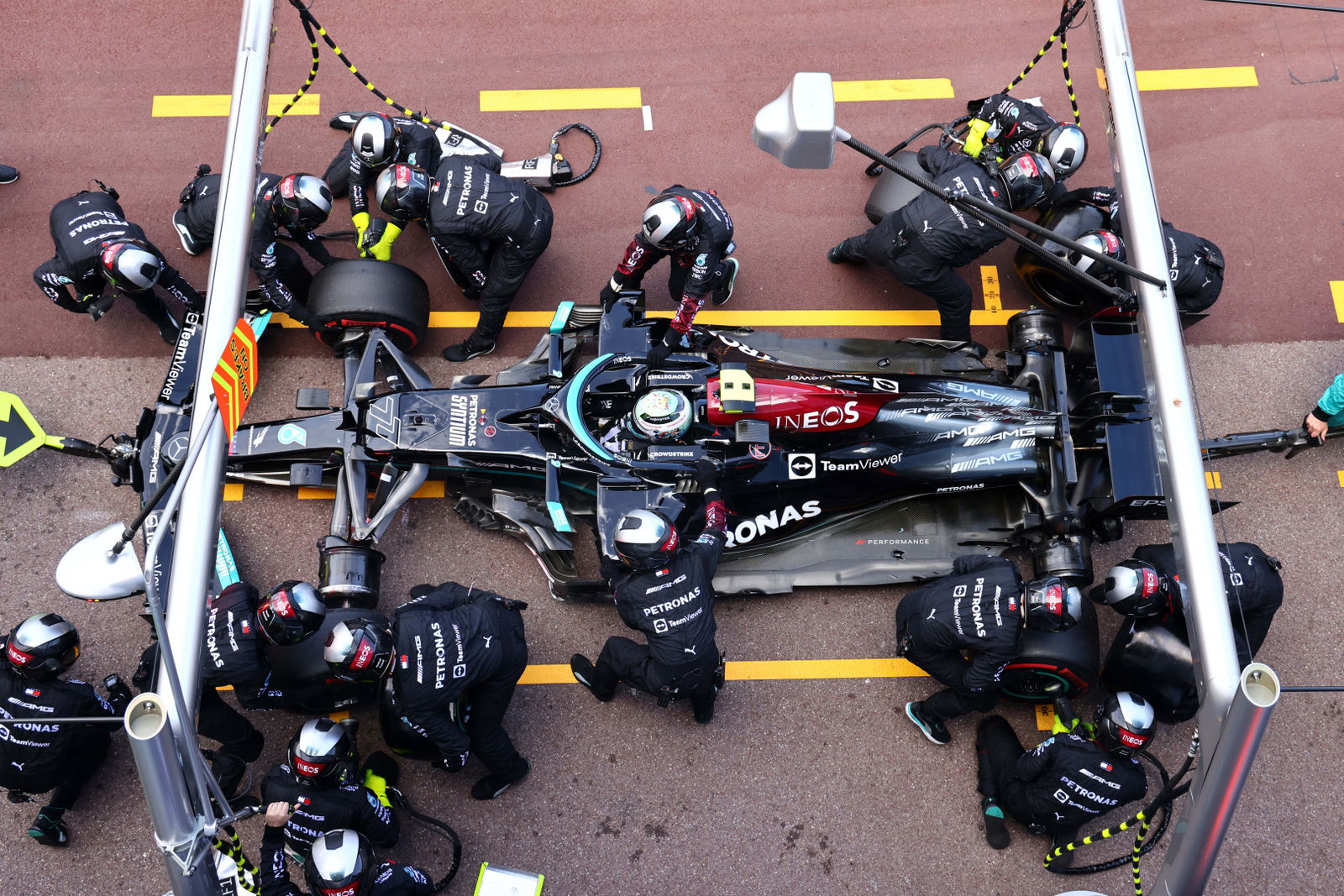
Expanding on what went wrong, Allison - using a screwdriver analogy - said there was simply nothing left for the gun to grip onto because the nut had been so badly damaged.
“We call it machining of the nut,” he explained. “It’s a bit like when you take a Phillips head screwdriver and you don’t get it squarely in the cross of the screwdriver and you start to round off the driving face of the screwdriver slot.
"Then you simply can’t take the screw out of whatever it is you are trying to take it out of because you’ve no longer got the driving faces.
“A very similar thing happened with our pit stop. If the gun starts spinning and chipping off the driving faces of the wheel nut, then in quite short order, given the violence and power of the gun, you can end up with no driving faces and you just machine the nut down to a place where there’s nothing left to grab hold of.
“And that’s what we had today.”
Allison revealed that Mercedes was unable to remove the wheel from the car and will have to use special equipment to detach it back at the factory.
Having lost the lead of both world championships for the first time in the hybrid era, Mercedes is looking to bounce back from its “emotional rollercoaster” in typically convincing style.
“When you realise that you are facing failure, anger kicks in, and this is a completely normal phenomenon,” said Wolff.
“You need to be able to stay on top of your emotions and say ‘Okay, it is what it is, what can we do in order to optimise the current situation? And if there is not a lot to optimise short-term, how can we avoid these kinds of failures in the future and where do we need to optimise?’
“Only if you create a safe environment where people can speak up and you are really able to analyse the shortcomings and the gaps, will you create solutions that will make you avoid doing the same mistakes in the future.”
